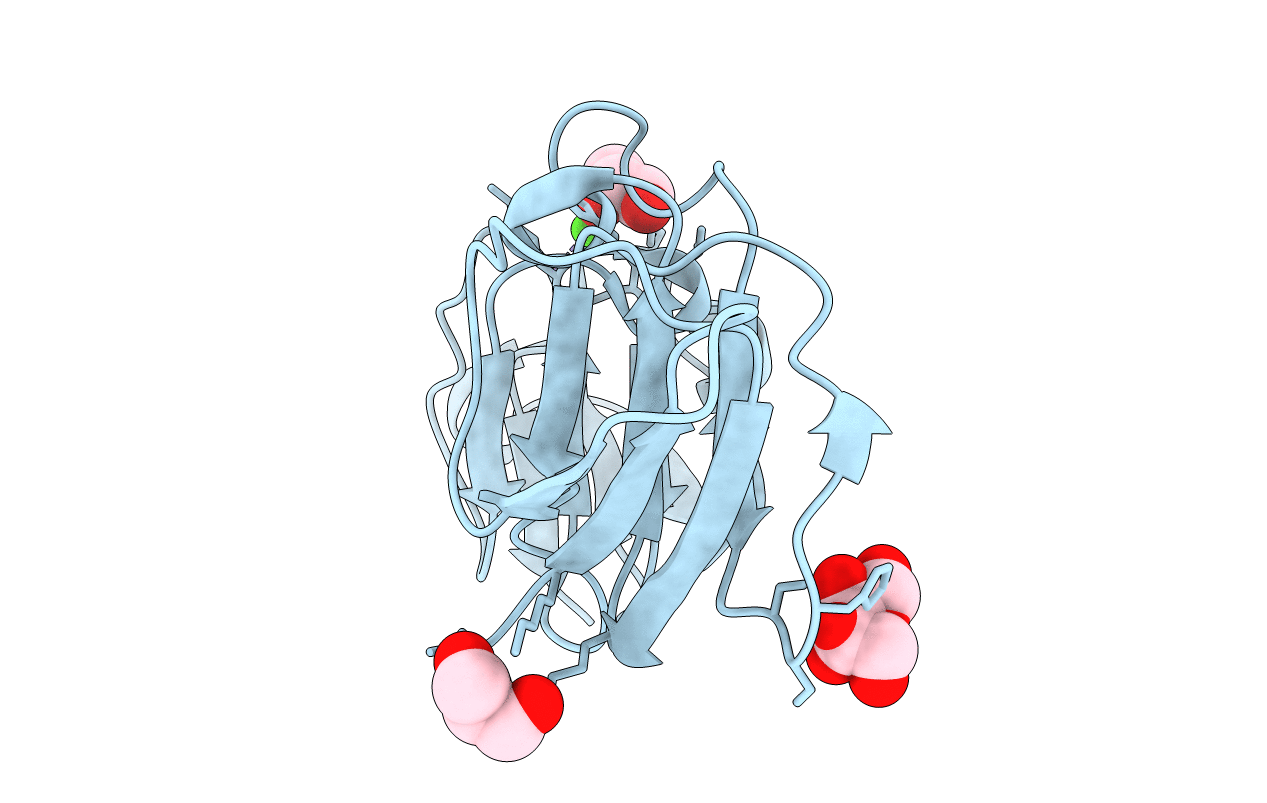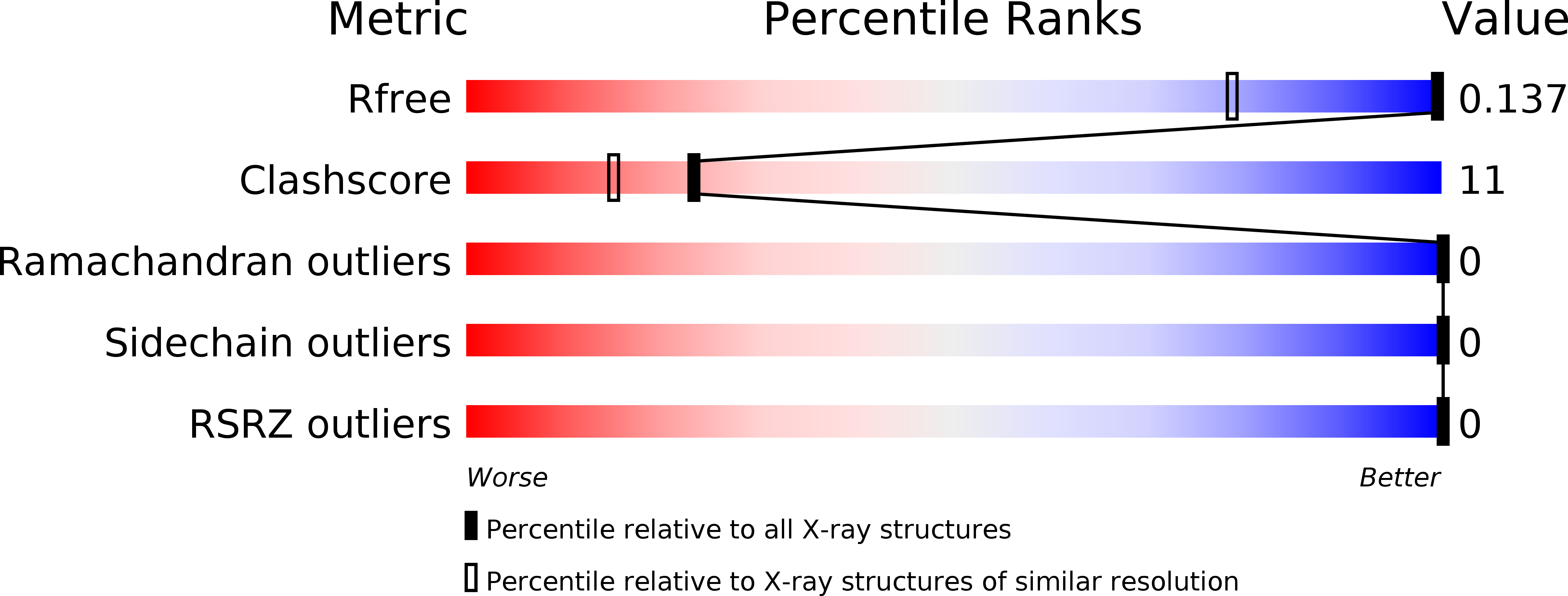
Deposition Date
2012-12-07
Release Date
2013-06-05
Last Version Date
2024-10-16
Entry Detail
PDB ID:
4IAU
Keywords:
Title:
Atomic resolution structure of Geodin, a beta-gamma crystallin from Geodia cydonium
Biological Source:
Source Organism:
Geodia cydonium (Taxon ID: 6047)
Host Organism:
Method Details:
Experimental Method:
Resolution:
0.99 Å
R-Value Free:
0.12
R-Value Work:
0.10
R-Value Observed:
0.10
Space Group:
P 1 21 1


